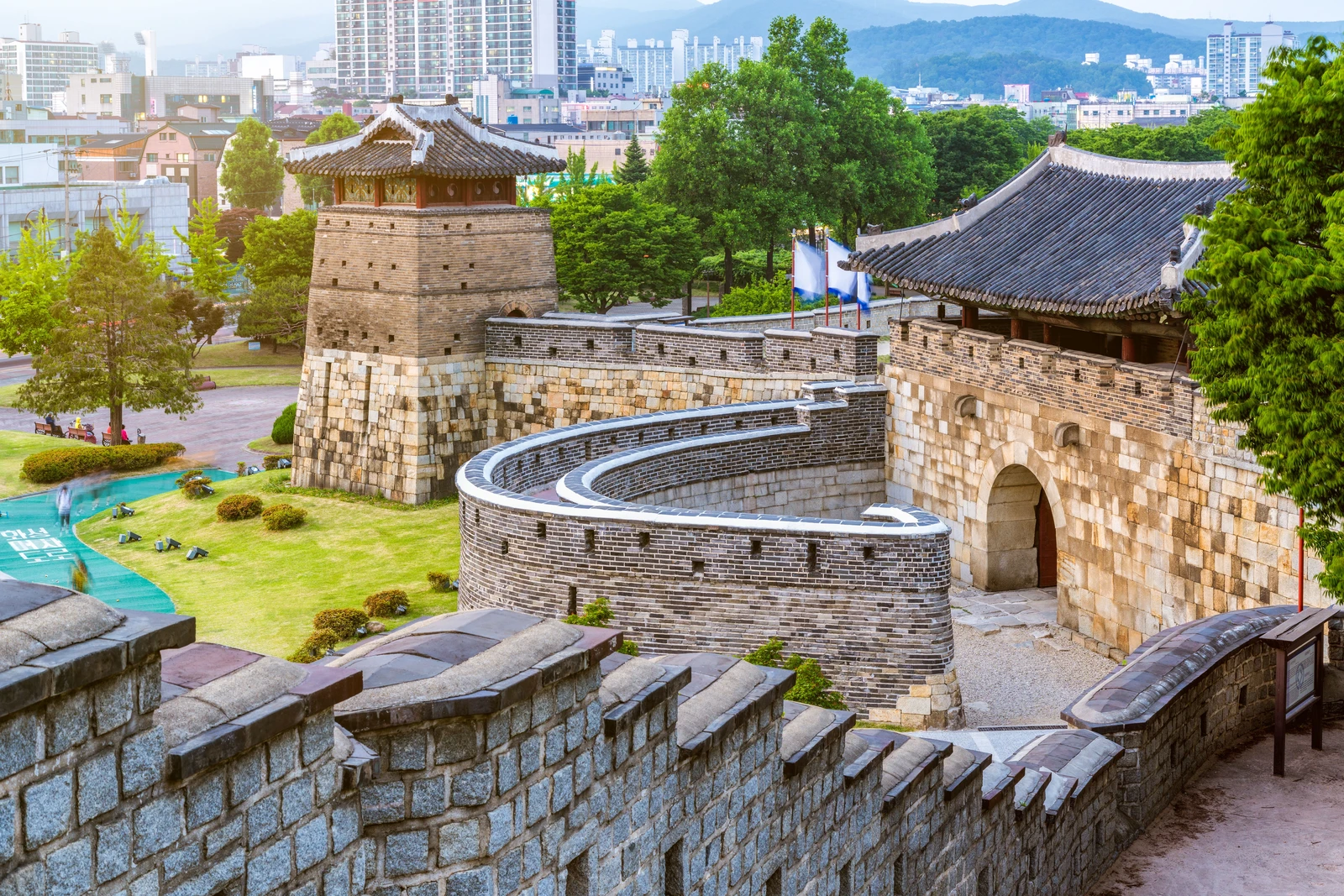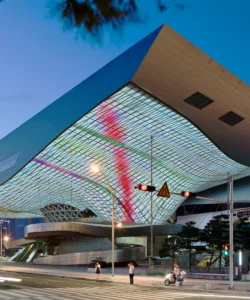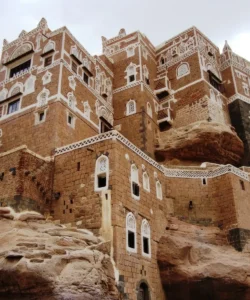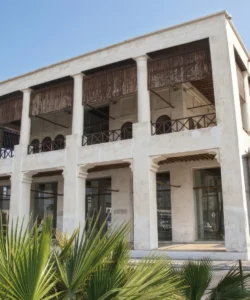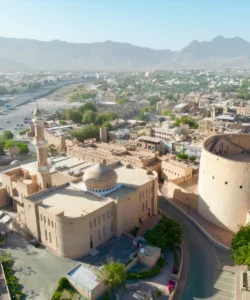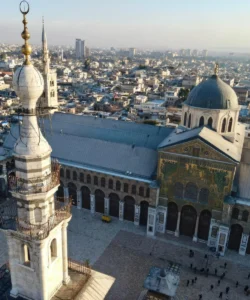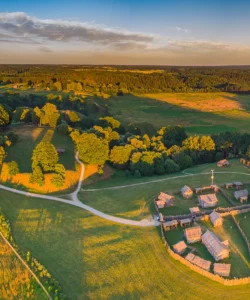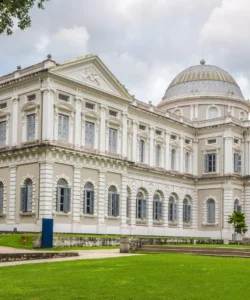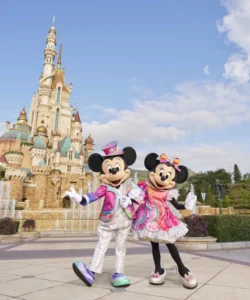Hwaseong Fortress, located in Suwon, Gyeonggi Province, South Korea, is an extraordinary 18th-century fortress that encircles the heart of Suwon City. Built from 1794 to 1796 by King Jeongjo of the Joseon Dynasty, it’s not merely a defensive structure but a planned city that embodies a king’s filial piety and a remarkable integration of Eastern and Western military architectural principles. Recognized as a UNESCO World Heritage site, Hwaseong Fortress is celebrated for its innovative design, historical significance, and ongoing vibrant life within its walls.
Listen to an introduction about Hwaseong Fortress
![]()
Name: Hwaseong Fortress (화성; 華城)
Address: 910 Jeongjo-ro, Paldal-gu, Suwon-si, Gyeonggi-do, South Korea. It encompasses a large part of central Suwon.
How to get there:
Hwaseong Fortress is easily accessible from Seoul, making it a popular day trip:
- From Seoul by Subway: Take Seoul Subway Line 1 to Suwon Station. The journey takes approximately 1 hour. From Suwon Station, you can then take a local bus (e.g., buses 11, 13, 36, or 39, which stop near various fortress gates like Paldalmun or Janganmun) or a short taxi ride directly to the fortress.
- From Seoul by Train: Take a KORAIL train from Seoul Station to Suwon Station, which can be faster than the subway.
- By Bus: Express buses connect various parts of Seoul to Suwon Bus Terminal, from where you can take a local bus or taxi to the fortress.
- By Car/Taxi: Hwaseong Fortress is approximately 30-40 minutes from Seoul by car, depending on traffic. There are parking facilities available near major gates like Paldalmun Parking Lot and Yeonmudae Parking Lot.
- Suwon City Tour Bus: Consider taking the Suwon City Tour bus, which provides guided access to the fortress and other local attractions.
Landscape and Architecture:
Hwaseong Fortress is a masterpiece of military architecture, uniquely designed to adapt to the topography of the land while incorporating advanced techniques:
- Extensive Perimeter Wall: The most prominent feature is its impressive 5.74-kilometer (3.57-mile) long wall that follows the natural contours of hills (like Paldalsan Mountain to the west) and flat land, enclosing an area of 1.3 square kilometers. The wall varies in height from 4 to 6 meters.
- Diverse Defensive Structures: Along the wall, there are 48 original structures (40 of which have been restored), showcasing a wide array of defensive architectural elements:
- Four Main Gates: Janganmun (North Gate), Paldalmun (South Gate), Hwaseomun (West Gate), and Changnyongmun (East Gate). Janganmun and Paldalmun are particularly grand, multi-storied structures with crescent-shaped outer walls (ongseong) for added protection. Paldalmun stands in the middle of a busy city intersection, creating a striking blend of old and new.
- Bastions (Chi): Protruding structures designed to provide flanking fire on approaching enemies.
- Watchtowers (Gongsimdon): Unique circular brick towers with multiple firing ports, demonstrating innovative design.
- Command Posts (Jangdae): Elevated posts like Seojangdae (Western Command Post) on Paldalsan Mountain, offering strategic views and where the king would oversee military drills.
- Arrow-Launching Platforms (Nodae) and Sentry Posts (Poru).
- Secret Gates (Ammun): Small, hidden gates for covert military operations.
- Sluice Gates (Sumanmun): Two impressive gates where the Suwoncheon stream flows through the fortress, designed for defense and water management.
- Combination of Materials: The fortress innovatively combined stone and brick, which was a new approach in Korean fortress building at the time, enhancing its strength and durability.
- Hwaseong Haenggung Palace: Located within the fortress walls, this “temporary palace” was built for King Jeongjo to stay when visiting his father’s tomb and for official functions. It’s a grand complex in its own right, showcasing traditional Korean palace architecture.
- Modern Construction Techniques: The construction incorporated advanced techniques and equipment, including the use of cranes and pulleys, influenced by Western technology introduced through “Silhak” (Practical Learning) scholars like Jeong Yakyong, who largely designed the fortress.
- Planned City: The fortress was not just a military installation but the core of a newly planned city, designed to promote commerce and provide a new political base.
What makes it famous:
Hwaseong Fortress is famous for:
- UNESCO World Heritage Site: Inscribed in 1997, it’s recognized as an outstanding example of 18th-century Korean military architecture, showcasing the exchange of scientific and technical achievements between East and West.
- King Jeongjo’s Filial Piety: It was built by King Jeongjo to honor his father, Crown Prince Sado, who tragically died after being confined to a rice chest. The relocation of his father’s tomb to Suwon and the construction of the fortress around it symbolized the king’s deep devotion.
- Innovative Architectural Design: The fortress is celebrated for its integration of various military architectural styles and techniques from Korea, China, and even Europe, making it a highly effective and advanced defensive structure for its time.
- The Blueprint (Hwaseong Seongyeok Uigwe): A detailed and perfectly preserved construction record, the “Hwaseong Seongyeok Uigwe,” which meticulously documented every aspect of the fortress’s building process, materials, and techniques. This blueprint was crucial for its accurate restoration after damage during the Korean War and is a marvel of administrative foresight.
- Symbol of Silhak (Practical Learning): The fortress’s construction was a culmination of the “Silhak” movement, a school of thought that emphasized practical and scientific approaches to governance and societal problems, distinguishing it from purely traditional designs.
- Walking the Walls: Visitors can walk the entire 5.74 km circuit of the fortress walls, offering diverse perspectives of the structures, the city of Suwon, and the surrounding natural landscape.
- Daily Performances: Various performances, including martial arts demonstrations (Mu Ye 24 Gi) at Hwaseong Haenggung Palace and traditional archery experiences, bring the history to life.
Differences from some other wonders:
Hwaseong Fortress distinguishes itself from other famous fortresses and historical sites in several key ways:
- King’s Personal Motivation & Filial Piety: Unlike many fortresses built purely for strategic defense or conquest, Hwaseong’s construction was deeply intertwined with King Jeongjo’s profound filial piety towards his deceased father. This personal, emotional motivation behind a grand public work is a unique aspect of its history.
- Integration of Eastern and Western Military Science: Its design is a pioneering example of how Western military engineering (introduced through Jesuits in China) was integrated with traditional East Asian fortress-building techniques. This intellectual exchange and synthesis make it a unique blueprint for military architecture, rather than solely a product of local tradition.
- “Perfectly Documented” Restoration: While many historical sites undergo restoration, Hwaseong Fortress was restored based on an exceptionally detailed and complete set of original blueprints (Hwaseong Seongyeok Uigwe). This allowed for an unprecedented level of authenticity and accuracy in its reconstruction after the Korean War, which is rare for such large historical structures.
- Planned City and Economic Hub: It was not just a fortress wall but the perimeter of a newly conceived planned city, intended to be a center for political and economic reforms. This dual function as both a military and urban planning marvel sets it apart from purely defensive fortifications.
- Active Urban Integration: Unlike many isolated historical fortresses, a significant portion of Hwaseong Fortress’s walls and gates are integrated into the modern urban fabric of Suwon, with busy roads and daily life unfolding around and through its ancient structures. This dynamic coexistence of past and present is a distinct feature.
In essence, Hwaseong Fortress is more than a historical wall; it is a visionary monument that stands as a testament to a king’s love, an architectural fusion of East and West, and a vibrant living heritage that continues to shape the identity of Suwon City.
